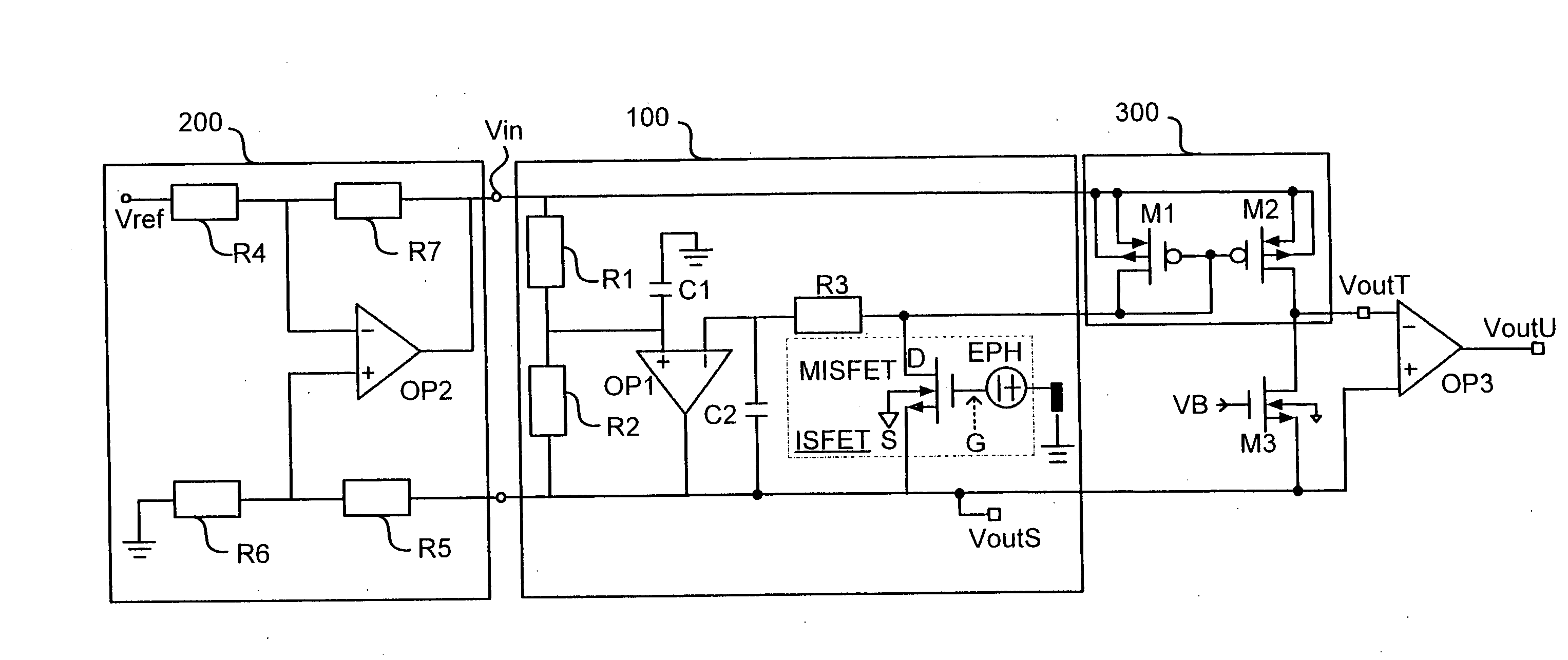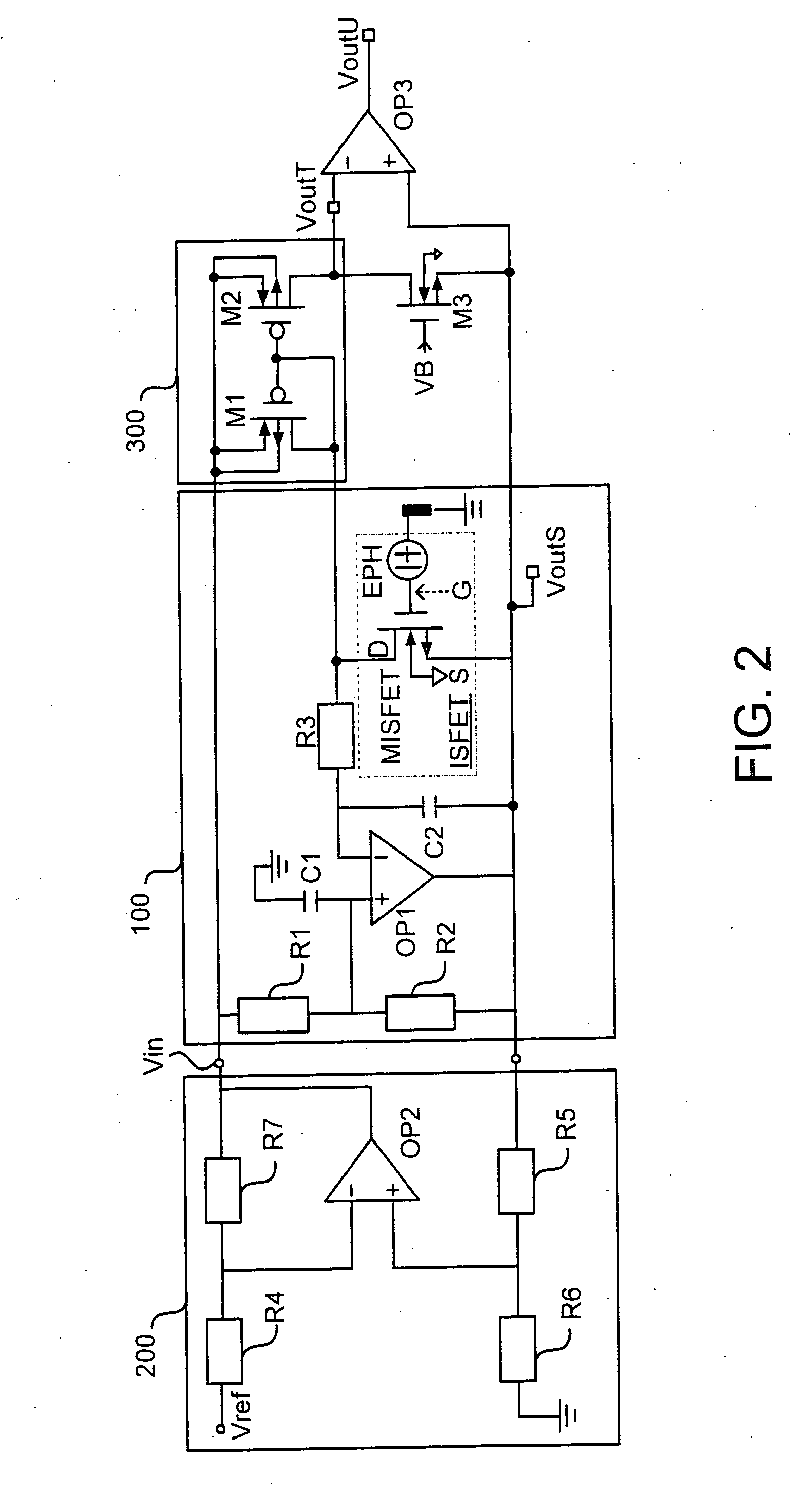Electronic circuit for ion sensor with body effect reduction
a technology of electronic circuit and ion sensor, which is applied in the direction of instruments, material electrochemical variables, chemical methods analysis, etc., can solve the problems of limiting the precision of measurements carried out by means of isfet, the substrate potential seriously affecting the real characteristics of elements, and the part of the circuit has not yet been applied to the constant voltage and constant current configuration
- Summary
- Abstract
- Description
- Claims
- Application Information
AI Technical Summary
Benefits of technology
Problems solved by technology
Method used
Image
Examples
Embodiment Construction
[0027] To facilitate further understanding of the object, construction, characteristics and functions of the invention, a detailed description with reference to the embodiments is given in the following.
[0028] Referring to FIG. 2, the electronic circuit for ion sensors with the body effect reduction disclosed in the invention is a kind of readout circuit in a bridge-type configuration. The variation in the threshold voltage VTH can be recorded at the source terminal by using the bridge construction in a part of the bridge-type floating source circuit, grounding the reference electrode Ref, and connecting it to the source floatingly.
[0029] The sensor connected to the bridge-type floating source circuit can be directly exposed to the solution. As long as the species to be measured react with the acceptor on the ion sensing film, a change in the potential is observed at the ion sensing film / electrolyte interface recorded at the output terminal. An ISFET is a kind of ion sensing eleme...
PUM
| Property | Measurement | Unit |
|---|---|---|
| temperature | aaaaa | aaaaa |
| time drift coefficient | aaaaa | aaaaa |
| temperature coefficients | aaaaa | aaaaa |
Abstract
Description
Claims
Application Information
 Login to View More
Login to View More - R&D
- Intellectual Property
- Life Sciences
- Materials
- Tech Scout
- Unparalleled Data Quality
- Higher Quality Content
- 60% Fewer Hallucinations
Browse by: Latest US Patents, China's latest patents, Technical Efficacy Thesaurus, Application Domain, Technology Topic, Popular Technical Reports.
© 2025 PatSnap. All rights reserved.Legal|Privacy policy|Modern Slavery Act Transparency Statement|Sitemap|About US| Contact US: help@patsnap.com



